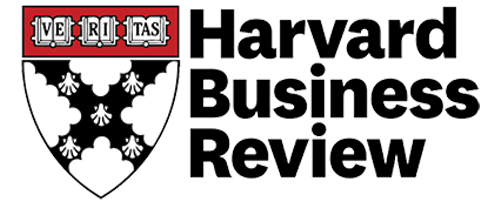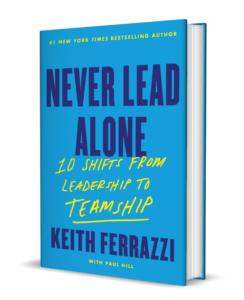Keeping a team’s energy dialed up through tough times has always been a challenging task — but sustaining resilience in a pandemic? Nobody has written a playbook for that. As Gallup asked in its end of 2021 report: “How can managers be expected to improve the engagement and wellbeing of your workforce if they, themselves, are burned out?”
Through our coaching practice, we have gathered data on the behaviors and practices of 272 global businesses. This dataset has helped us to codify three simple-to-execute, high-return practices that teams can adopt to reboot their mindset, ignite energy, and boost performance.
1) Resilient teams know that “collaboration” doesn’t equal “meetings.”
We all know meetings are overabundant. An April 2021 survey of 1,000 full-time remote workers by the meeting scheduling tool Doodle found that 69% of respondents said their meetings had increased since the pandemic started, and 56% said schedule overload was damaging their job performance. By one estimate, up to $283 billion is lost annually from unproductive meetings.
But the problem is not an inevitable outgrowth of remote and hybrid work. The real issue is the misplaced belief that all collaboration starts in meetings — particularly synchronous meetings.
Resilient teams understand that effective collaboration can start asynchronously. Our data reveals that asynchronous collaboration can reduce meetings by up to 30%. We’ve also found that asynchronous collaboration can lead to better decision making, as it allows people more time and space to think about their contributions — and it allows more people to contribute, as compared to face-to-face meetings, in which it’s easier for a few people to dominate a conversation.
Take the example of Gil West, the former chief operating officer of Delta Air Lines, who moved over to become the chief operating officer of General Motors’ autonomous vehicle subsidiary Cruise in early 2021. Gil told me that over the course of his career, he used to pull a meeting together to discuss problems. But he’s found the asynchronous collaboration at Cruise, where they use Google Docs to discuss problems, to be faster and more efficient.
One powerful asynchronous practice is the decision board. You can use this method to kick off a new project or to stress test a project already underway. Using an online tool, such as Google Docs or MURAL, ask team members to answer the following four questions on their own time:
- What problem are we trying to solve?
- What bold solutions are we considering?
- Where will progress get stalled? (Who or what inside the organization may have issues with the possible bold solutions?)
- Who should be invited into this discussion? (Who might contribute to greater innovation? Who will be integral to execution? Who would we benefit from hearing, even outside the organization?)
The team’s answers to these questions can then be circulated more widely to encourage challenge and debate among collaborators and stakeholders.
One client of ours, a large manufacturer, prepared a decision board with her team using a simple MURAL board in less than an hour. She said they could not have produced a more complete picture of their change management challenges if they had met with the company presidents for three hours.
This collaborative approach is more inclusive than any in-person meeting could ever be. It gives introverts or anyone who prefers time to think about the ability to do just that. More insights, ideas, and constructive comments are bound to emerge from a week of three or four dozen people deeply engaged in reading each others’ ideas and contributing their own thoughts than from the handful of people who might have spoken up in the course of a 50-minute meeting.
Teams are often surprised by the level of candor found in the decision board process as compared to a synchronous meeting format. “The process allowed open honesty we don’t usually see, and for everyone’s voice to be heard,” said one team member of a client company who had recently prepared a decision board. “Many of the responses we saw were unexpected. Some of those people I know may not have shared those ideas if it had required them to talk openly and on the spot in a meeting.”
Sitting in meeting after meeting and not feeling heard is a surefire drain on resilience. What most people think of as the primary cause of fatigue is often missed: how the way we work can be one of the greatest contributors to mental stress and emotional exhaustion.
2) Resilient teams build caring, supportive relationships with each other.
Productive relationships thrive on top of strong connectedness and care, the basis of much of Keith’s writing and research. Candor, transparency, and risk-taking are all earmarks of strong relationships. You cannot operate at your team’s fullest potential if you don’t know what’s on each other’s minds.
A simple practice that helps to build caring, trusting, and supportive relationships is the Personal Professional Check-In (PPC). Whether you’re starting a meeting or just having a phone call with someone you have not spoken to for a few days, be sure to do a quick PPC at the top of the conversation. Ask these two questions:
- What are you struggling with personally?
- What are you struggling with professionally?
Roshan Navagamuwa, chief information officer at CVS Health, used these check-ins with his team at a time when they were under a great deal of pressure, working with a new CEO against the backdrop of the merger between CVS and Aetna. The exercises “opened up a level of shared commitment” to the team’s new mission, he said.
3) Resilient teams feel a collective responsibility to lift each other’s energy and well-being.
What we’ve seen emerge in the best teams, particularly during this past crisis, is collective resilience becoming a team responsibility. The social contract shifts from, “I know everybody’s got enough on their shoulders, I don’t want to bother them with my stress,” to ”It’s our responsibility to sustain each other through challenging times by celebrating and lifting each other up.”
This is a rare feature of team behavior. Our data suggests only 14% of team members feel they have a collective responsibility to lift each other’s energy and mental well-being. In most teams, resilience is seen as an individual responsibility.
One high-return practice to encourage this mindset is the Energy Check-In, which gives team members the time and space to really reveal how they’re doing and what’s going on in their lives. At the beginning of a meeting, let’s say every other week but no more or less than once a month, the team leader says to everybody, “Hey, we’re just going to do an energy check. Where is your energy level at? Put a number from zero to five in the chat. Zero means ‘I’m in the dirt,’ and a five means ‘I’m sipping on rainbows with unicorns.’”
If any team member signals their energy is at a two or lower, then the team should ask if they’re okay. In one session I coached, an employee shared during an energy check-in that their spouse had recently been told they needed a kidney transplant. In the wake of this revelation, the team was able to offer emotional support and even help offload activities to lighten their colleague’s burden.
Anja Hamilton, chief people officer of enterprise cloud computing business Nutanix, said that her team used energy check-ins at the beginning of the team’s first strategic planning meeting. “As everybody shared what’s draining their energy, we could feel the virtual room becoming lighter — likely a result of people being relieved that they were able to share with the team what’s been going on with them,” she said. “The energy check-in was a powerful reminder for us that we’re all human beings first, which is easily missed in our virtual world. It influenced our interactions for the remainder of our strategic planning meeting and beyond. We now have the context needed to collaborate effectively.”
“It was amazing to experience how a quick energy check-in (done virtually) could set the tone of trust within the team,” added Deep Mahajan, senior director and head of people development and culture at Nutanix. “We could identify commonalities as well as appreciate our different experiences.”
Our research, which is explored in depth in our new book Competing in the New World of Work, has revealed that how we perform work as a team contributes more to resilience than external stressors. On resilient teams, individuals feel responsible for energizing each other. This is in stark contrast to teams that are challenged by frustrating ways of working and fractured relationships. As we move into the third year of pandemic uncertainty, adopting these three simple practices will help managers build more resilient — and re-energized — teams.






